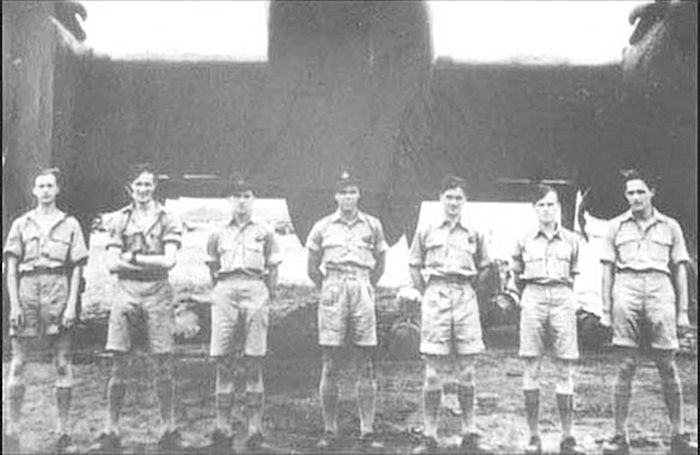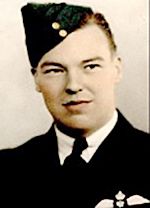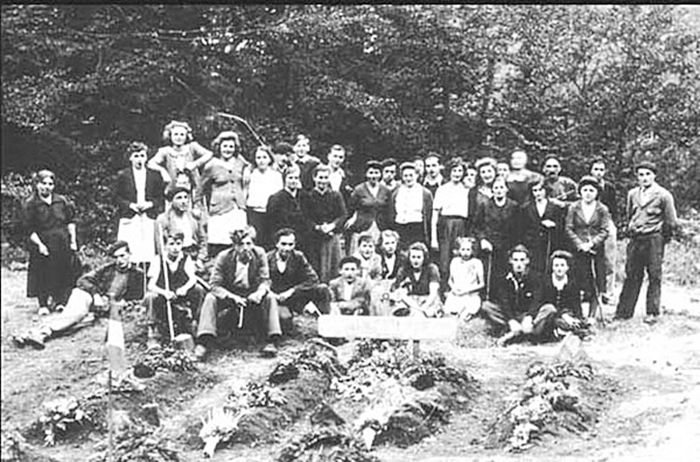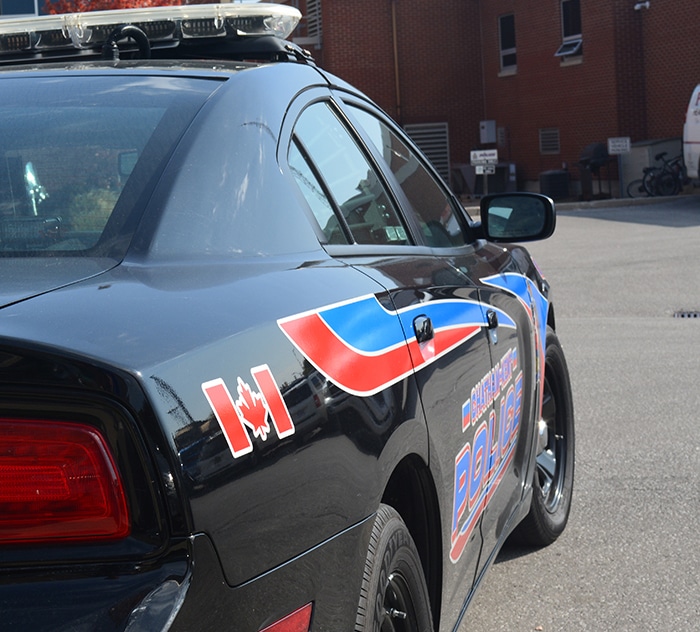
Chatham’s Leslie Arthur Peers made the ultimate sacrifice during the Second World War, and a local contingent will see first hand how his efforts are appreciated.
The group, led by Chatham-Kent Essex MP Dave Van Kesteren and C-K police chief Dennis Poole will travel to the Pyrenees Mountains to visit the gravesite of Pilot Officer Peers and six RAF crew members. Their Halifax bomber crashed into the mountains near the Spanish border on July 14, 1944.
LEADWAVE Technologies from Chatham Voice on Vimeo.
They won’t be alone. To mark the 70th anniversary of the crash, a contingent of about 30 British personnel will be there as well, according to Alain Gaudet, a former Canadian paratrooper living in the Pyrenees who has put a great deal of effort into co-ordinating the Canadian visit.
 Peers’ bomber was dropping weapons and ammunition to members of the French Resistance on July 14, 1944 when it crashed. Local citizens found the wreckage and recovered the bodies. By laying them to rest, they created the world’s smallest, highest and most difficult to access military cemetery, Gaudet told The Chatham Voice.
Peers’ bomber was dropping weapons and ammunition to members of the French Resistance on July 14, 1944 when it crashed. Local citizens found the wreckage and recovered the bodies. By laying them to rest, they created the world’s smallest, highest and most difficult to access military cemetery, Gaudet told The Chatham Voice.
“The locals have been maintaining this gravesite in honour of the fallen crew,” said Andrea Grimes, public affairs liaison officer with the Essex and Kent Scottish Regiment.
Along with the tribute service, the contingent will receive the Spanish Republic flag and other items to honour Peers, Grimes added.
The ceremony takes place July 12-14 in the Pic du Douly and Tarbes region in southwest France.
Grimes said other members of the Peers family attended the cemetery in 1999 for a ceremony, but are now too old to make the journey again.
Peers flew with the RAF’s 624 Squadron out of Blida, Algeria. The squadron flew covert missions into the south of France in support of the resistance fighters. The fateful supply mission was in support of a number of French units who were tasked with delaying a Panzer division that was on its way to the Normandy region.
Gaudet, who has extensively researched the squadron and specifically the flight crew, said an Australian bomber crew was initially tasked with the mission, but when Peers heard about it, he went to his commanding officer and asked for the mission, as the Aussies didn’t have as much experience flying low-level missions into that rugged part of France.
For local Legion member and piper Walt Tomaszewski, this will be his second trip to the remote cemetery. He went there in 1999. The local contingent leaves July 10, flying from Toronto to Frankfurt, Germany; then onto Toulouse, France; and finally to Tarbes.
Tomaszewski said the region is very similar to Chatham-Kent, as Tarbes is a city of about 50,000, while it is also part of a regional municipality – Midi-Pyrenees — of about 110,000.
While the size of the city and municipality are quite similar, Tomaszewski said the geography is vastly different, as it is a very mountainous region, and so too are some of the people.
“When I was there in 1999, I did see shepherds with horses and carts going around,” he said. “It was quite the sight to see.”
Tomaszewski said Poole is making the trip as a representative of the municipality. He’s bringing along two members of the honour guard, while a young bagpiper who is a member of the Essex and Kent Regiment is also heading over.
The Canadians will meet up with the Brits and co-ordinate with the local French citizens, Tomaszewski said.
“We’re dealing basically with civilians over there,” he said. “It’s fitting because the resistance really pretty well held up the fort in that end of the country while the Nazis occupied France.”
On Saturday, the group will attend and play the pipes at three events, “including going up the mountain,” Tomaszewski said.
They will also receive the flag of the Spanish Resistance that day.
“It’s a war flag. These things aren’t given lightly,” he said.
Tomaszewski said the contingent would also do something very rare while they are there – lead a Bastille Day Parade.








"Gaudet, who has extensively researched the squadron and specifically the flight crew, said an Australian bomber crew was initially tasked with the mission, but when Peers heard about it, he went to his commanding officer and asked for the mission, as the Aussies didn’t have as much experience flying low-level missions into that rugged part of France." –
This statement is an outright lie perpetrated by Gaudet, to promote himself and a future potential film that he is trying to promote. He is using the name of a very brave RCAF pilot, Les Peers and his equally brave young RAF crew (all volunteers) in this venture. Squadron records show that Pilot Officer Peer's crew had only flown 4 missions and had less experience than most of the other crews. Furthermore all missions were secret and PO Peers would not have known what missions other crews were tasked to do! Finally flying at 5,000 feet is hardly considered as low flying in the RAF, RCAF or any other air force! The key to the mission was accurate DR navigation hence the inclusion of the more senior and experience navigator and bomb aimer.
We are appalled that this man should denigrate the young men of other nationalities to promote his own ends.
LWQ – former RAF Pilot, member of 624 (SD) Sqn Association and former keeper of No.6 (RCAF) Group HQ Museum at Allerton Park Castle, North Yorkshire.